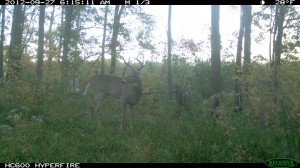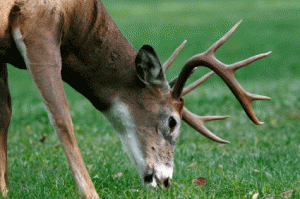Easiest Food Plot for Deer
Easiest Food Plot for Deer
Cereal rye is the Easiest Food Plot for Deer. Throw it on bare dirt and it grows. Plant it 2 to 6 weeks before the first average frost, 50 to 100 pounds per acre. Get a good kill and throw it in the dying vegetation. It will grow.

Easiest Food Plot for Deer
Red clover is the Easiest Food Plot for Deer. Spread the seed and spray the grasses to act as a mulch for the clover, or spray in the fall and frost seed in late winter right on top of the snow. The freeze thaw patterns of spring creates cracks the seed falls into to germinate.

Easiest Food Plot for Deer
Radishes and rape are the Easiest Food Plot for Deer. Plant in late July through August. Spread the seed on a prepared bed and pack or simply spread into existing vegetation and spray glyph 2 quarts per acre to be your mulch. Easiest Food Plot for Deer.
Easiest Food Plot for Deer
Natural forbes are the Easiest Food Plot for Deer. Spray and old growth field with cloth to kill the grasses and the deer will eat everything else that grows. Simply killing grasses can be the Easiest Food Plot for Deer.
The plan is to not disturb the seed bed by turning the dirt, and by spraying the short weeds, they will fall over our seeds making a blanket to trap the moisture for germination during the heat of summer. These seeds may struggle with limited rain, but the compost we will make is like a dead nurse crop that helps our young plants get started.
Food plots failed
This technique will work for addressing low spots that died out, or very weedy areas that need some help before the deer season. Your food plots failed in spots, but you can jump in there with a backpack sprayer and some seed and be back in the game. If you fertilized well early on, take some of those credits and use less this go around, but always fertilize brassica. Many food plots failed because it was not fertilized.
By planting our brassica 70 days before the first average frost, we will hit that 60 – 90 day window that allows lots of growth and tonnage of forage, without letting the plants mature making them unattractive to the deer herd. We sprayed, planted and fertilized this plot on only 3 hours. It helps that we did not have to work the dirt because we could see it, and even though our food plot failed, we will still have greens this fall. Check the average first frost in your area to discover a good time to easily plant a brassica blend when your food plots failed.
Fall food plots for deer
 Fall food plots for deer consist of either annuals like corn and beans planted in the spring, or annuals, perennials and bi-ennials planted late summer. Today we will focus on a strategy for attracting bucks in the early bow season and until the first few hard frosts in areas where the deer feed heavily on clover, alfalfa or soybeans all summer long. Described as a green to green transition, this fall food plots for deer strategy is a dynamite way to get close shots at the biggest deer on your property.
Fall food plots for deer consist of either annuals like corn and beans planted in the spring, or annuals, perennials and bi-ennials planted late summer. Today we will focus on a strategy for attracting bucks in the early bow season and until the first few hard frosts in areas where the deer feed heavily on clover, alfalfa or soybeans all summer long. Described as a green to green transition, this fall food plots for deer strategy is a dynamite way to get close shots at the biggest deer on your property.
Early fall food plots for deer are green and growing
As summer rolls into early fall, most of the plant life is shifting the focus from growth to seed production and energy transfer to it’s root system. When this happens your deer herd will shy away from previously attractive soybeans, clovers, forbs and grasses because as they stop growing, they just do not taste as good. Your job as a hunter is to find what they are switching over to and hunt that source. Acorns are key this time of year but they are everywhere and hard to hunt. Your best strategy is to give them some fresh green growth that is tasty and attractive. A late season planting is the best fall food plots for deer strategy in this scenario.

